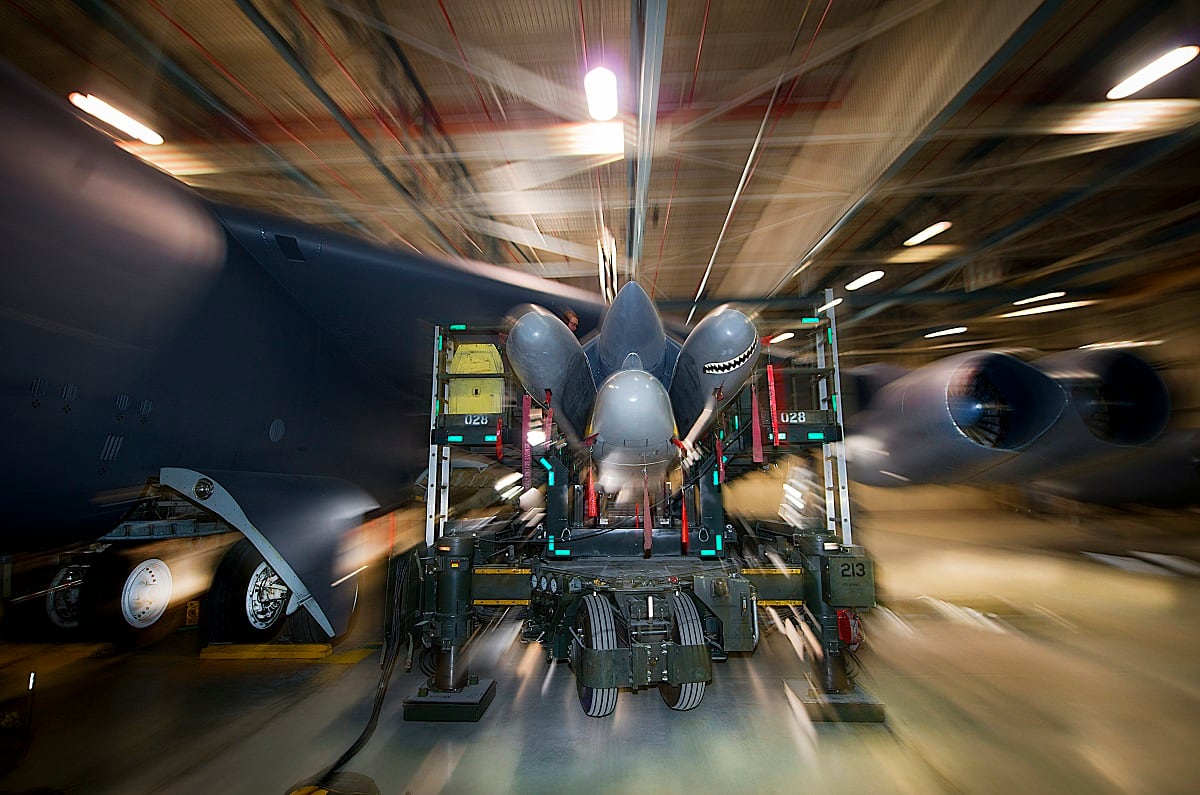WASHINGTON — A long-term continuing resolution will result in delays for modernizing America’s nuclear warheads, while putting at risk an already challenging plan to build plutonium pits needed for the next generation of U.S. intercontinental ballistic missiles, nuclear officials are warning.
The National Nuclear Security Administration is a semiautonomous agency under the Department of Energy that handles the manufacturing and maintenance of America’s nuclear warheads. Like other government agencies, NNSA would be limited to fiscal 2019 funding limits under a continuing resolution, and it would be unable to start new contracts.
The current continuing resolution, or CR, is set to end Nov. 21, but there is little expectation that regular budgeting will then resume. Congress is debating the merits of pushing the CR through December, but analysts are concerned the CR could extend into next year.
“We are in a situation right now where we have single-point failures throughout our enterprise,” Lisa Gordon-Hagerty, the NNSA administrator, said during a Defense Writers Group breakfast earlier this month. “It’s necessary for us, for the NNSA and for the nuclear security enterprise to receive consistent and robust funding to modernize our infrastructure as well as continue ongoing operations.”
“We’re looking at where we can move funding insofar as CRs will allow us to do so,” she added. “We’re working very closely with OMB and the administration to see what we can do to continue our important programs to modernize the infrastructure as well as the stockpile and our workforce initiatives and our endeavors.”
Gordon-Hagerty did not go into detail about specific CR-related worries, but according to an NNSA source, the agency has identified three main areas of concern under a longer CR.
The first is, broadly, keeping the warhead modernization efforts on schedule. Two of those modernization programs — the B61-12 gravity bomb and W88 submarine-launched ballistic missile warhead — already face program delays thanks to an issue with a commercial part that has to be redesigned.
Gordon-Hagerty said a CR should not impact that particular issue, as the funding for a solution is coming from a realignment of other warhead modernization programs. But a delay to one program caused by a CR “does affect all of the other modernization programs and all of the other work that we have ongoing throughout our nuclear security enterprise,” she said.
The second major area of concern is the surplus plutonium disposition program, which is supposed to dispose of 34 metric tons of excess plutonium at a South Carolina facility. That program emerged as the successor to the controversial MOX program, and has faced opposition from South Carolina Sen. Lindsey Graham. Construction on that facility could be delayed under a CR.
The NNSA source said that the agency requested extra funding for the surplus plutonium disposition program through the budget anomaly process, but was not given the resources it requested.
The third area of concern is a 10-year plan to develop a native plutonium pit in the United States. The NNSA has been charged with producing 80 plutonium pits a year by 2030, a target that Gordon-Hagerty acknowledged is a tight window for the agency to hit, even with stable funding.
“We are again rebalancing, looking at our budget across the entire enterprise to see what it is we need to do to meet the scope and schedule of that 2030,” she said. “Am I confident we can get there? Yes. Is it fraught with — probably a bad way of saying it — land mines? It is.”
RELATED

Construction costs
Construction featuring prominently on this list should not be a huge surprise; NNSA officials are quick to point out in public events that they are still using some buildings that date back to the Manhattan Project. According to Gordon-Hagerty, more than 50 percent of NNSA facilities are more than 40 years old, and over a third of those are about 70 years of age.
The looming CR extension comes as the agency launches a number of construction projects, and a CR could lead to major delays in standing up those facilities.
While that’s an issue for every agency under a CR, the NNSA is concerned that the specialty construction talent needed to build those facilities may not available if a contract is frozen and then picked up again later.
There could also be high-dollar costs. Responding to a lawsuit by environmental groups trying to halt the construction of the Y-12 facility in Tennessee, NNSA said a six- to 12-month delay in construction at that location could result in almost $1 billion in extra costs for taxpayers and the agency may have to lay off 1,000 construction personnel.
Those numbers, first reported by the Exchange Monitor, likely have resonance with other potential delays at construction sites caused by a CR — meaning construction delays at one or more sites could quickly become costly for an agency whose facilities and construction needs have traditionally been underfunded.
“It’s been on schedule and on budget for the last six years. It will be finished in 2025 for approximately $6.5 billion,” Gordon-Hagerty said of the Y-12 facility. “If that funding somehow fails to materialize, then we’ve got over 1,000 crafts [personnel] working at the site right now. Crafts personnel are hard to come by, especially those that are qualified. So if they see a question about funding or funding gets pulled back, they’re going to find positions elsewhere.”
Aaron Mehta was deputy editor and senior Pentagon correspondent for Defense News, covering policy, strategy and acquisition at the highest levels of the Defense Department and its international partners.





